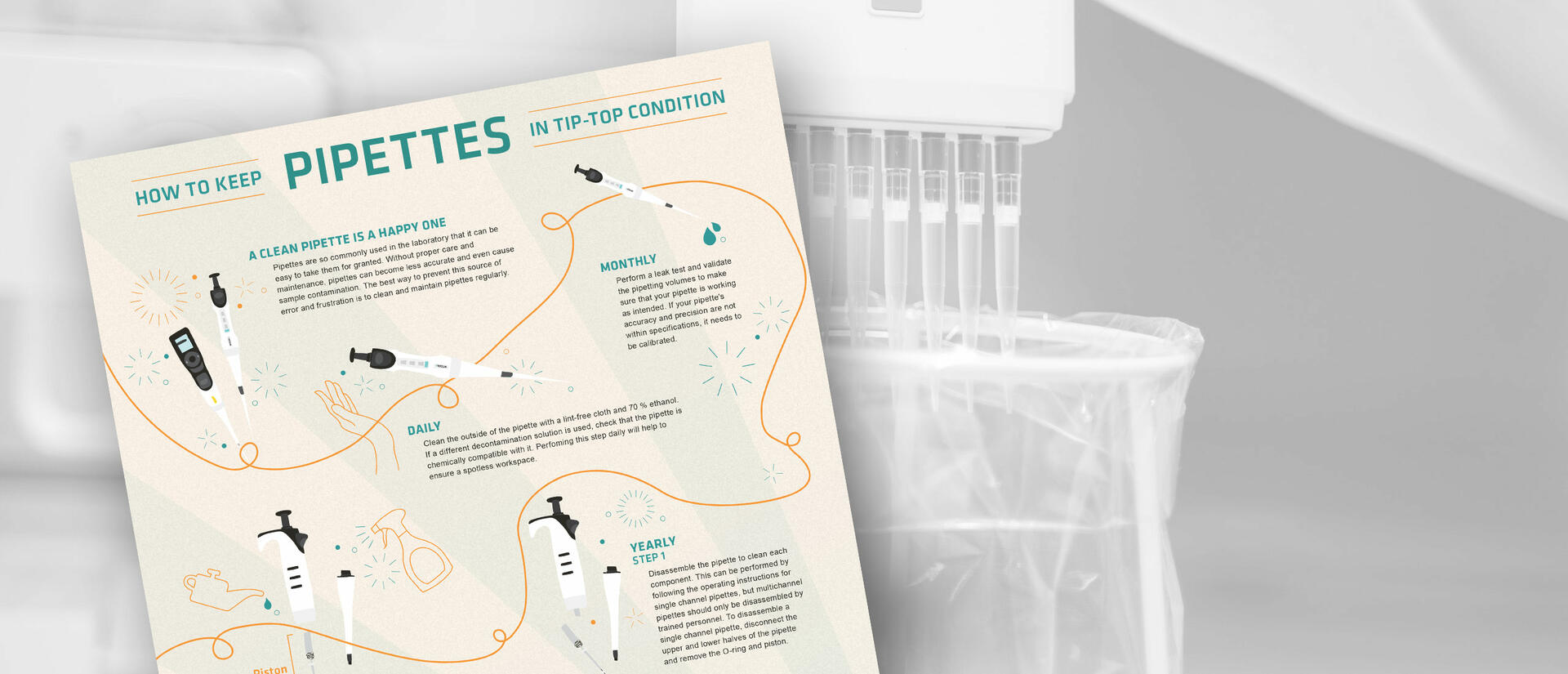How to keep pipettes in tip-top condition
How to keep pipettes in tip-top condition

A clean pipette is a happy one
Pipettes are so commonly used in the laboratory that it can be easy to take them for granted. Without proper care and maintenance, pipettes can become less accurate and even cause sample contamination. The best way to prevent this source of error and frustration is to clean and maintain pipettes regularly.
Follow our cleaning and maintenance tips below to keep your pipettes in tip-top condition.
If you wish, you can also download the tips as a poster.
Daily
Clean the outside of the pipette with a lint-free cloth and 70 % ethanol. If a different decontamination solution is used, check that the pipette is chemically compatible with it. Perfoming this step daily will help to ensure a spotless workspace.
Monthly
Perform a leak test and validate the pipetting volumes to make sure that your pipette is working as intended. If your pipette's accuracy and precision are not within specifications, it needs to be calibrated.
Yearly
Step 1
Disassemble the pipette to clean each component. This can be performed by following the operating instructions for single channel pipettes, but multichannel pipettes should only be disassembled by trained personnel. To disassemble a single channel pipette, disconnect the upper and lower halves of the pipette and remove the O-ring and piston.
Step 2
Clean the pieces and remove any clogs in the airways. Check that there are no damaged parts and replace the O-rings of the tip fittings. Let the pipette air dry, then grease the piston with an appropriate pipette-safe lubricant, as recommended in the pipette’s operating instructions. Reassemble the pipette and perform a leak test and validation of the pipetting volumes.
Dealing with contamination
Contamination can happen at any time, requiring additional decontamination procedures to maintain pipette integrity, accuracy and avoid cross contamination of future samples.
| Contaminant | Decontamination solution* |
|---|---|
| Aqueous solutions | 70 % ethanol |
| Organic solvents | Detergent |
| Radioactive solutions | High-strength radioactivity decontamination solution |
| Proteins | Detergent (do not use alcohol, as it will coagulate proteins!) |
| RNase | 95 % ethanol and an additional 10-minute soak in 3 % hydrogen peroxide, then wipe with distilled water |
| DNA/RNA | 10 % bleach and an additional wipe with isopropyl alcohol |
*Don’t forget to check the chemical compatibility of your pipette for the decontamination reagents before use.
Different types of contaminants require different types of cleaning solutions. After cleaning, wipe the pipette with 70 % ethanol and allow it to air dry.
Apart from care and maintenance, you should always follow pipetting best practices to ensure maximum accuracy. An additional calibration routine, at least every 12 months, keeps pipettes working at their best. Cleaning, maintaining, following routine checks and performing calibrations not only give pipettes a long lifetime of precision activity, but also keep you and other laboratory members safe from malfunction and contamination.























